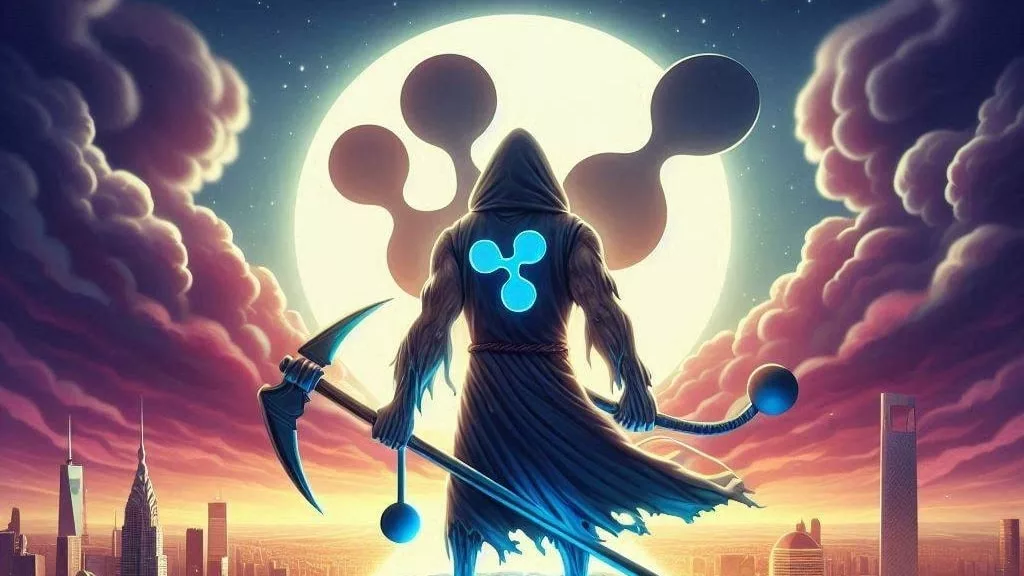
Wietse Wind, the founder of XRP Labs and the creator of the Hooks functionality, has voiced strong concerns about Ripple’s new approach. This development raises key questions about the future of Ripple and its impact on the XRP ecosystem.
Understanding Ripple’s New Approach
Ripple, the organization behind the XRP cryptocurrency, has recently shifted its strategy regarding smart contracts. On September 4th, Ripple detailed plans to incorporate native smart contract capabilities directly into the XRP Ledger. This marks a departure from Ripple’s earlier approach, which kept smart contracts separate from the core ledger functionality.
Previously, Ripple’s Chief Technology Officer, David Schwartz, had stated that the XRP Ledger was designed as a “fixed function ledger” with smart contracts better suited for other platforms like the EVM Sidechain or Xahau.
Who Is Wietse Wind and What’s His Role?
Wietse Wind is a well-regarded figure in the XRP community and the founder of XRP Labs. His team has developed the Hooks functionality, a smart contract feature designed to enhance the XRP Ledger’s capabilities. Hooks, which Wind and his team have been working on since July 2020, allows for customizable code to influence transaction behavior on the XRP Ledger.
Wind’s development of Hooks represents a major advancement, aiming to add programmable interactions within the XRP ecosystem without altering its core framework.
The Criticism: Wind’s Open Letter to Ripple
Wietse Wind has publicly criticized Ripple’s new direction in an open letter. He expresses disappointment with Ripple’s decision, highlighting a lack of transparency and collaboration with independent developers like himself. Wind describes his team’s effort in developing Hooks, pointing out that their work was done despite limited initial support and skepticism.
In his letter, Wind explains that the team’s dedication to developing Hooks was driven by their belief in enhancing the XRP Ledger’s functionality. The sudden shift by Ripple to develop its own native smart contracts appears to undermine these efforts. Wind’s letter underscores his frustration with the abrupt change and Ripple’s inconsistency with previous statements.
Implications of Ripple’s Decision
Ripple’s move to integrate native smart contracts into the XRP Ledger could have wide-reaching effects on the XRP ecosystem. The XRP Ledger has been known for its speed, efficiency, and low transaction costs. Introducing native smart contracts aims to expand the ledger’s functionality and potentially attract more projects and developers to its platform.
However, this change also risks marginalizing existing innovations like Hooks. The sudden shift in strategy might cause fragmentation within the developer community and could impact investor confidence. Wind’s letter raises concerns about whether Ripple’s new direction will align with the contributions of existing developers or lead to a more centralized approach.
Market and Community Reactions
The reaction from the XRP community and market participants has been mixed. Some view Ripple’s shift as a positive development, believing that native smart contracts could enhance the XRP Ledger’s capabilities and competitiveness. This change might open new opportunities for decentralized applications and other smart contract-based projects.
Conversely, others are concerned that Ripple’s new direction might alienate developers who have invested time and resources into alternative solutions. The change in strategy could also affect investor perception and the overall stability of the XRP ecosystem.
Currently, XRP is trading around $0.5692. The market’s response to Ripple’s decision and the criticism from key developers will be closely monitored. How Ripple handles this situation will influence the future development of the XRP Ledger and its position in the blockchain space.
What’s Next for XRP and the XRP Ledger?
Ripple’s integration of native smart contracts into the XRP Ledger marks a significant shift in strategy. The outcome of this transition will depend on several factors, including Ripple’s ability to manage the integration and address concerns from the development community.
For XRP, the next steps will be crucial in determining whether it can leverage the new smart contract capabilities while preserving its core strengths. The XRP community will need to adapt to these changes and evaluate how they fit with the broader goals for the XRP Ledger.
The coming months will be important as Ripple works to implement native smart contracts and address developer concerns. The success of this transition will likely shape the future of the XRP Ledger and its competitive standing in the blockchain industry.
Conclusion
Ripple’s recent decision to incorporate native smart contracts into the XRP Ledger has ignited considerable debate. Wietse Wind’s criticism highlights the tension between Ripple’s new direction and the contributions of independent developers. As Ripple navigates these changes, the future of the XRP Ledger will depend on how well it balances innovation with community collaboration and maintains its commitment to the ecosystem’s growth.



Get the latest Crypto & Blockchain News in your inbox.